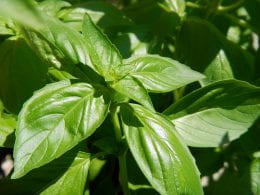
Photo: USDA Flickr
Fresh or dried herbs can add a lot of flavor and color to many meals. Herbs and spices are often referred to as seasonings, but they are different products.
Herbs are the leaves of plants that grow close to the ground, such as parsley, thyme, basil, oregano and more. While many gardeners grow their own herbs, there are purchasing options for herbs such as fresh, dried or as a paste. When using herbs in recipes, use this guide for approximate equivalent usage amounts:
- 1 tablespoon finely cut fresh herbs
- 1 teaspoon crumbled dried herbs
- 1/4 to 1/2 teaspoon ground dried herbs
Spices are from various parts of plants and trees such as the bark, roots, seeds, berries or fruit. Examples include cinnamon, ginger, cloves, onions, garlic and more.
Make your own spice blends! Using these can replace some or all of the salt in many recipes to help reduce sodium intake. Many store-bought spice blends are high in sodium. So skip the salt and try these homemade spice blends from North Dakota State University Extension.
Store dried herbs and spices in a cool, dry, dark location. But the flavors can fade over time. In general, use dried herbs and spices withing 2-3 years.
To preserve herbs and spices, use these tips from PennState Extension.
Learn more from University of Nebraska-Lincoln Extension.